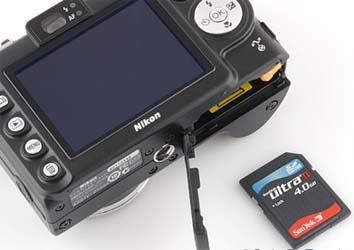Size doesn't matter when looking for memory cards
 Frankfurt - There's no shortage of confusion and choices when it comes time to look for a new memory card for your digital camera. What's missing is some clarity about what best suits your needs among the rows and rows of plastic-wrapped cards in your local electronics store.
Frankfurt - There's no shortage of confusion and choices when it comes time to look for a new memory card for your digital camera. What's missing is some clarity about what best suits your needs among the rows and rows of plastic-wrapped cards in your local electronics store.
Before heading into the fray, it's best to figure out which kind of card is needed. It's best to check out the camera's technical specifications or an old card.
After all, there's a wide variety of SD cards out there, to say nothing of the next generation of SDHC cards or the micro SDHC cards so common in mobile phones. For good measure, there is also a wide range of memory sticks and other memory card formats, one of which might be needed for your gadget.
"If you're not certain, just take the camera with you to the store," recommends Constanze Clauss of the German Photo Industry Association.
But it's not enough to just pick a type of card. There are, for example, three different speeds of SDHC cards - Class 2, 4 and 6, reflecting a minimum data transfer rate of 2, 4 or 6 megabytes (MB) per second.
The only reason to buy a card faster than a Class 2 is if you're using a camera that takes video, says Gerry Edwards of Dublin-based manufacturer Sandisk. It's a common misconception that modern cameras, particularly digital single lens reflex cameras, need a faster card.
Customers need to think about the card's capacity. German computer magazine Computer Bild recently tested 87 memory cards. The magazine reported that some cameras are incompatible with SDHC cards with capacities greater than 4 gigabytes (GB). If you absolutely want a card with more than 4 GB, check the camera's technical specification first to make sure the camera can handle the card.
If you end up with a seemingly useless card, try to see if it's possible to update the camera's software, recommends Clauss. These updates are usually available on the manufacturer's website. However, they are rarely available for cameras that are more than a few years old.
SDHC cards are currently available with capacities of up to 32 GB. Sony has recently introduced memory sticks and compact flash cards with similar capacities. But is that much memory necessary?
"We generally recommend, instead of buying one large one, to get two or three smaller ones," says Clauss. "After all, memory cards can break or get lost."
As a rule of thumb, one must be careful with memory cards. It's a bad idea to swap them out at the beach, for example, since sand could end up inside the camera.
Card prices have dropped dramatically. A 1 GB card can be had for about 6 euros (8.50 dollars) today. Manufacturers have also turned to offering guarantees. Some manufacturers are guaranteeing that their cards will work for 5, 10 or even 30 years.
Of course, not many people are going to use their memory cards for that long. It's more likely that they'll buy new ones in two or three years with even more memory.
Looming around the bend is SDXC, which stands for extended capacity and is, essentially, the next generation of SD card.
Those cards could eventually bring a standard of 32 GB up to 2 terabytes of memory and transfer rates of up to 300 MB per second. And, once that format updates to those bigger sizes and faster speeds, it's only a matter of time until all the other formats play catch up and offer similar performance. (dpa)